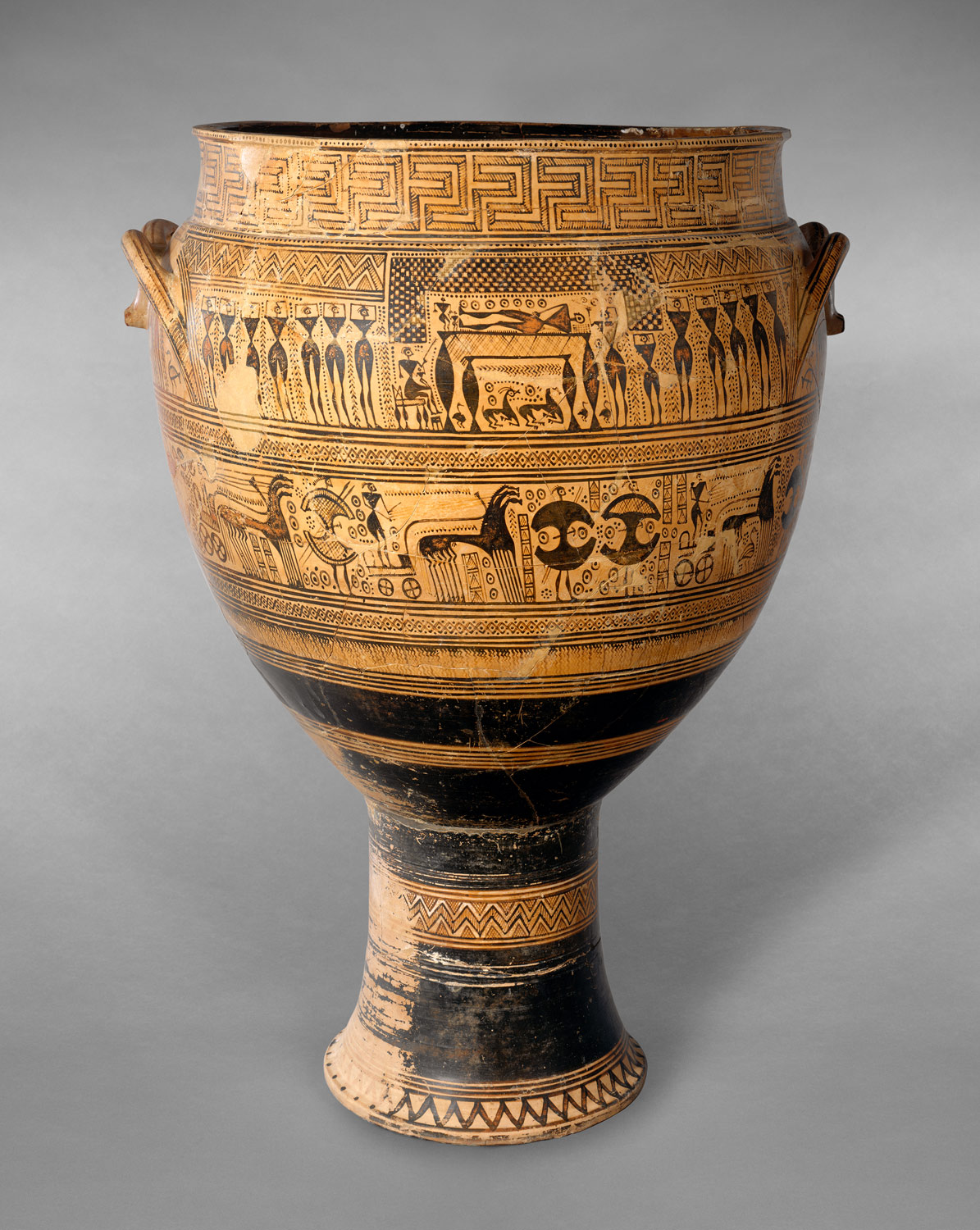Signed by Andokides, as potter; Attributed to the Andokides Painter (red-figure decoration); Attributed to Psiax (black-figure decoration)
Greek, Attic
Terracotta

Amphoras were usually used as large storage jars. This amphora vessel could possibly be one of the first red-figure painting, which was a much easier technique than the traditional black-figure decorations. The scene on the vessel is of Herakles and Apollo's fight over the tripod at Delphi. The top of the vessel is actually made much different than the rest because the white lip is decorated with black-figure painting. This small painting is of Herakles strangling a lion in the presence of Athena and Hermes. The style of the paintings were most likely influences by the pediments of the Siphnian Treasury at Delphi.




